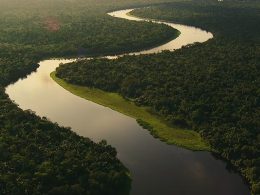Barclays has published a pioneering approach to assessing nature-related financial risks across large investment portfolios, calling for industry-wide collaboration to accelerate progress in an area it described as still at an early stage.
In a new report, Navigating Nature Risk: Applying the TNFD’s LEAP framework, the bank set out how it has applied the Taskforce on Nature-related Financial Disclosure’s Locate, Evaluate, Assess and Prepare (LEAP) methodology. Drawing on case studies of mining companies and European power producers, Barclays detailed a step-by-step process to assess nature-related dependencies, impacts and risks at the level of individual operating sites.
The year-long analysis examined around 250 mines operated by some 30 companies and 9,000 power generation facilities linked to 40 European utilities. The findings highlight both the potential scale of financial risks arising from nature loss and the pressing need for better-quality data and consistent methodologies.
The bank’s research underscores several key insights. First, while fragmented datasets and methodological gaps remain a significant challenge, there is sufficient information available for firms to take meaningful action. Second, nature-related risks may prove material for companies’ earnings over time, with sector, production type and site location determining the extent of exposure. Third, nature and climate must be assessed in tandem, requiring integrated scenario modelling. And finally, cross-sector engagement – from policymakers and standard-setters to corporates and financial institutions – is essential to driving consistency and progress.
As part of the project, Barclays’ risk and sustainability specialists developed new assessment frameworks and stress tests, including scenarios covering floods, droughts, air pollution controls, protected areas and minerals recycling policies.
Marie Freier, Head of Sustainability, Group, Barclays, said: “Nature is as complex as it is fundamental – it underpins the stability of our economies, societies and financial systems. The accelerating loss of biodiversity and degradation of ecosystems are now widely recognised as systemic risks, which are increasingly materialising across our clients’ operations. We hope that in sharing our work we can start an industry conversation that will enable nature considerations to be translated into meaningful and quantifiable insights which can help corporates and financial institutions alike, and ultimately support resilient, sustainable, and prosperous economies.”





















